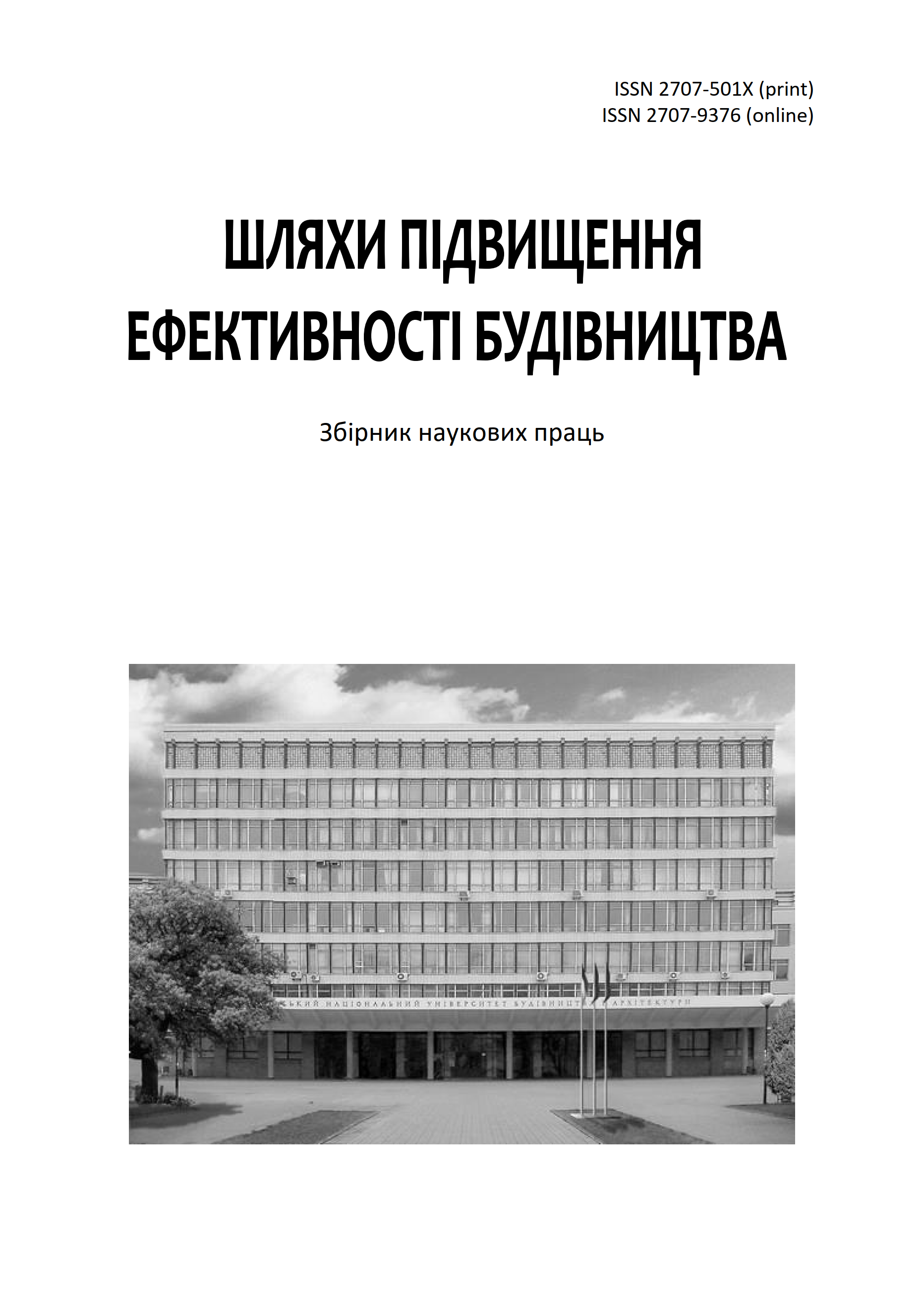Introduction of the European experience of digital administration in the practice of managing domestic construction projects
Keywords:
organization of territory, urban agglomerations, ecological and urban planning conditions, ecological balance, sector zoning, natural frameworkAbstract
The article is devoted to the substantiation of the content and regulation of organizational and technological measures to ensure biosferous construction on the basis of the experience of applying the ecologically-oriented methodology of territorial planning. The design decision to ensure the functional and technological reliability of developers of construction projects from the standpoint of the possibility of implementing the functions of biosphere-compatible construction and implementation of innovative design and architectural-planning solutions is analyzed. The problems and the main ecological and urban planning principles of the organization of the key forms of resettlement - urban agglomerations are considered. The method of planning organization of systems of interrelated resettlement taking into account ecological and city-planning conditions on the basis of organizational and technological estimation of biosphere compatibility of settlements from the standpoint of efficiency of building technologies of architectural and urban complex is proposed. The introduction of European experience in digital administration in the management of domestic construction projects in Ukraine is becoming an important area for the development of modern infrastructure and improving the quality of construction projects. This article traces the key aspects of the implementation of European standards and practices of digital administration in the management of construction projects in Ukraine. The article analyzes strategies for adapting and implementing digital tools such as Building Information Modeling (BIM), electronic document management and online monitoring systems that can increase the efficiency and transparency of project management. The advantages of using digital technologies in the planning, execution and control of construction projects are discussed, in particular, in terms of reducing costs, increasing the accuracy and speed of decision-making. Examples of successful implementation of European practices in construction management in different countries and possible ways of their adaptation to the conditions of the Ukrainian construction market are analyzed in detail. This analysis helps to determine the optimal strategies and approaches for the successful implementation of digital administration in construction project management in Ukraine.
References
Chernyshev, D., Ryzhakov, D., Dikiy, O., Khomenko, O., Petrukha, S. (2020) Innovative technology for management tools of commercial real estate in construction International Journal of Emerging Trends in Engineering Researchthis link is disabled, 8(9), Рр. 4967–4973.
Marchuk Tetyana (2017) Identification of the basic elements of the innovationanalytical platform for energy efficiency in project 20.financing. Investment Management and Financial Innovations. Vol. 14(4), pp. 12 DOI: http://10.21511/imfi.14(4).2017.02.
Ryzhakova G., Chupryna K., Ivakhnenko I. (2020) Expert-analytical model of management quality assessment at a construction enterprise /. Scientific Journal of Astana IT University, Volume 3, P. 71-82
Ryzhakova G., Ivakhnenko I., Chupryna I. (2021). Information-analytical support and organizational-structural regulation of operational activity of enterprises: economic evaluation and construction of management systems. Management of development of complex systems, 46, 91–99; dx.doi.org10.32347/2412-9933.2021.46.91-99.
Ryzhakova G., Petrukha S. The innovative technology for modeling management business process of the enterprise. International Journal of Recent Technology and Engineering (IJRTE). No. 8 (4), pp. 4024 – 4033. DOI:10.35940/ijrte.D8356.118419
Honcharenko T.,Ryzhakova, G., Borodavka, Y., Savenko, V., Polosenko, O. (2021) Method for representing spatial information of topological relations based on a multidimensional data model ARPN Journal of Engineering and Applied Sciences, 16(7), pp. 802–809.
Tormosov, R., Chupryna, I., Ryzhakova, G., Prykhodko, D., Faizullin, A. (2021) Establishment of the rational economic and analytical basis for projects in different sectors for their integration into the targeted diversified program for sustainable energy development SIST 2021 - 2021 IEEE International Conference on Smart Information Systems and Technologies, 9465993.
Revunov, O., Ryzhakova, G., Malykhina, O. (2021). Analytical tools for diagnostics of quality management systems of enterprises-stakeholders of construction projects. Management of Development of Complex Systems, 45, 161–169, dx.doi.org10.32347/2412- 9933.2021.45.161-169.
Kulikov P., Ryzhakova G., Honcharenko T., Ryzhakov D., Malykhina O. (2020). OLAP-Tools for the Formation of Connected and Diversified Production and Project Management Systems. International Journal of Advanced Trends in Computer Science and Engineering. 9(5): 8670-8676.
Trach R., Lendo-Siwicka M., Pawluk K., Polonski M. Analyze of direct rework costs in Ukrainian construction. Archives of Civil Engineering. 2021, Vol. LXVII (2), 397–411.
Downloads
Published
How to Cite
Issue
Section
License

This work is licensed under a Creative Commons Attribution 4.0 International License.
Authors who publish with this journal agree to the following terms:
- Authors retain copyright and grant the journal right of first publication with the work simultaneously licensed under a Creative Commons Attribution License that allows others to share the work with an acknowledgement of the work's authorship and initial publication in this journal.
- Authors are able to enter into separate, additional contractual arrangements for the non-exclusive distribution of the journal's published version of the work (e.g., post it to an institutional repository or publish it in a book), with an acknowledgement of its initial publication in this journal.
- Authors are permitted and encouraged to post their work online (e.g., in institutional repositories or on their website) prior to and during the submission process, as it can lead to productive exchanges, as well as earlier and greater citation of published work (See The Effect of Open Access).

